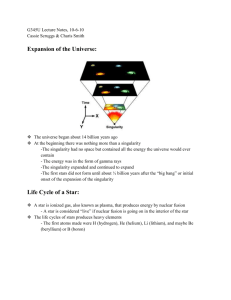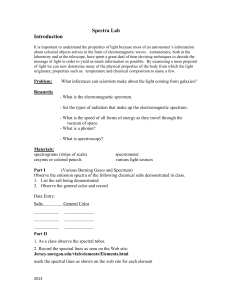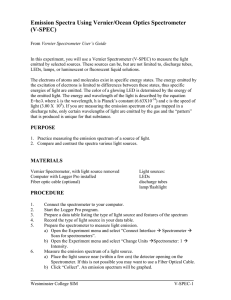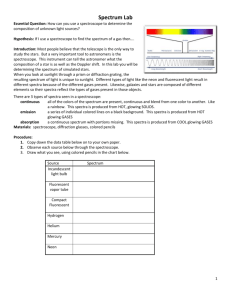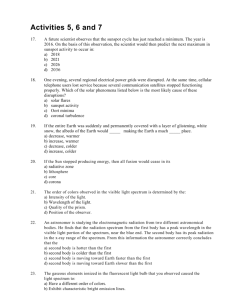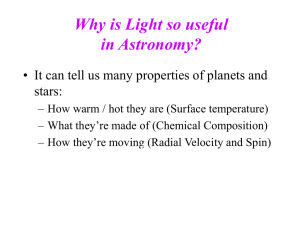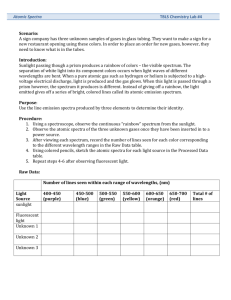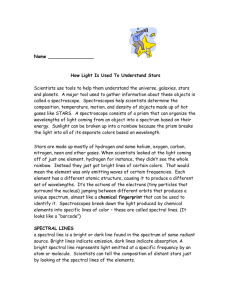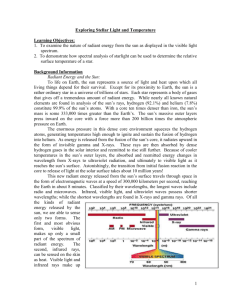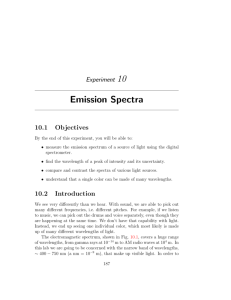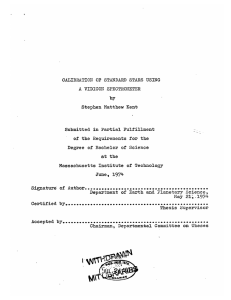FINGERPRINTING THE STARS LAB
advertisement
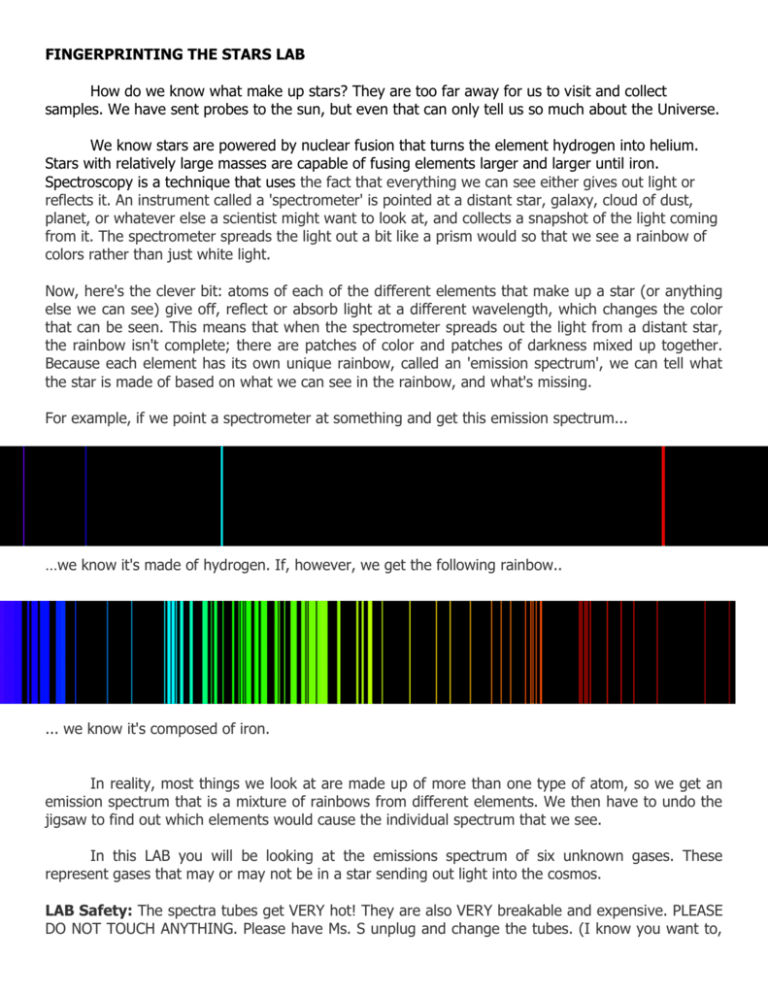
FINGERPRINTING THE STARS LAB How do we know what make up stars? They are too far away for us to visit and collect samples. We have sent probes to the sun, but even that can only tell us so much about the Universe. We know stars are powered by nuclear fusion that turns the element hydrogen into helium. Stars with relatively large masses are capable of fusing elements larger and larger until iron. Spectroscopy is a technique that uses the fact that everything we can see either gives out light or reflects it. An instrument called a 'spectrometer' is pointed at a distant star, galaxy, cloud of dust, planet, or whatever else a scientist might want to look at, and collects a snapshot of the light coming from it. The spectrometer spreads the light out a bit like a prism would so that we see a rainbow of colors rather than just white light. Now, here's the clever bit: atoms of each of the different elements that make up a star (or anything else we can see) give off, reflect or absorb light at a different wavelength, which changes the color that can be seen. This means that when the spectrometer spreads out the light from a distant star, the rainbow isn't complete; there are patches of color and patches of darkness mixed up together. Because each element has its own unique rainbow, called an 'emission spectrum', we can tell what the star is made of based on what we can see in the rainbow, and what's missing. For example, if we point a spectrometer at something and get this emission spectrum... ... …we know it's made of hydrogen. If, however, we get the following rainbow.. ... we know it's composed of iron. In reality, most things we look at are made up of more than one type of atom, so we get an emission spectrum that is a mixture of rainbows from different elements. We then have to undo the jigsaw to find out which elements would cause the individual spectrum that we see. In this LAB you will be looking at the emissions spectrum of six unknown gases. These represent gases that may or may not be in a star sending out light into the cosmos. LAB Safety: The spectra tubes get VERY hot! They are also VERY breakable and expensive. PLEASE DO NOT TOUCH ANYTHING. Please have Ms. S unplug and change the tubes. (I know you want to, but if anything broke or skin was burnt, it would be a serious issue. Ms. S would rather have to deal with the consequences than you.) Hypothesis: I hypothesize that if I observe and draw the six unknown gases with a spectrometer, I will be able to identify their elements using a spectrum chart and then compare it to stars. Materials: 2 light boxes 6 unknown gases Spectrometer/spectroscope Spectrum chart LAB sheet for recording Colored pencils, crayons, or markers of the correct colors Optional: FLINN Emission Spectra Manual Procedure: 1. READ THE LAB SAFETY ABOVE. Initial that you have read and understand the expectations. ___________ your initials 2. Read all of the procedure before beginning. 3. Most likely, you will do two gases a day, so it will take three days to do this LAB. 4. Ms. S will turn on the two mystery gases of the day. 5. Stand a foot or so away from the edge of the table. You will be several feet away from the light boxes. 6. Look through the spectroscope to see the emission spectra of the gas. It is a bit tricky. The lines will appear on the side of your vision. If you do not see anything, try making sure you are facing the light. Also try slowly twisting the spectroscope. 7. Draw what you see with the closest color you can find in your data chart. 8. Look at the spectrum chart to see if you can identify what gas you found. 9. Answer the questions. Analysis Questions: 1. What were the potential errors in your LAB? 2. How correct or incorrect were you in this LAB? 3. What elements were in the LAB? 4. Write a scenario that explains how scientists use spectroscopy to identify what stars are made of and explain how this relates to fusion 5. All elements are created in stars. How are the heavier elements created? Data: Use colored pencils, crayons, or markers to draw the location, thickness, and color of each spectrum line. Remember to then identify the gas.


